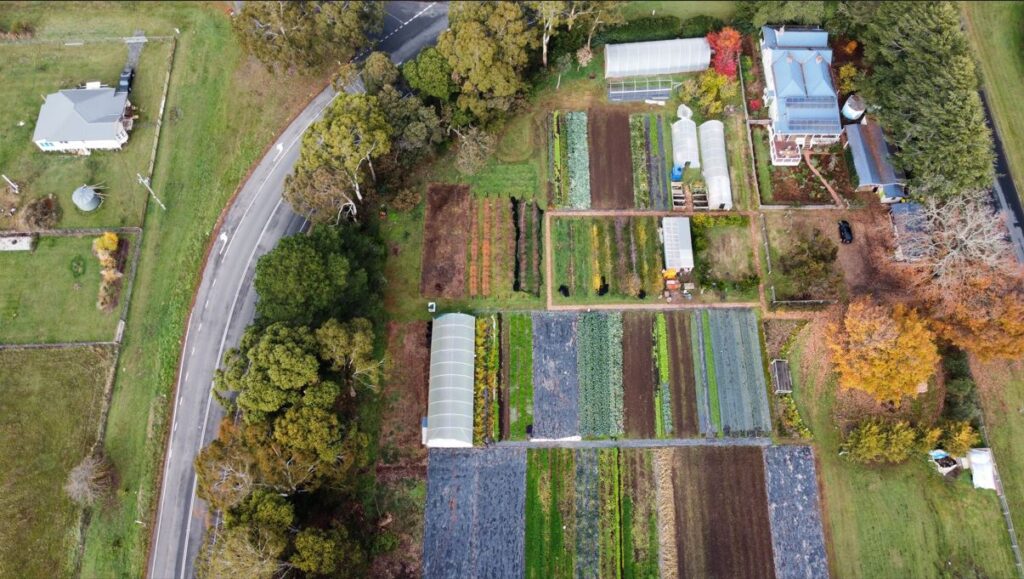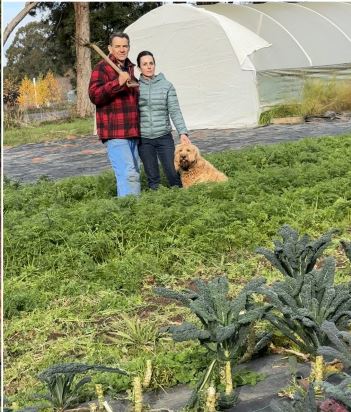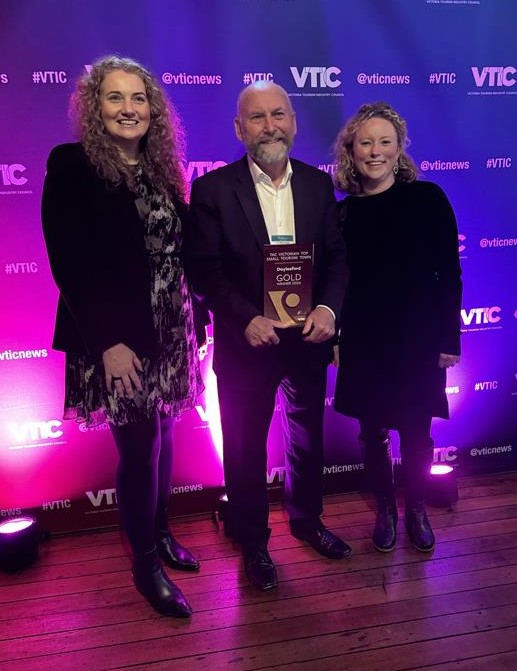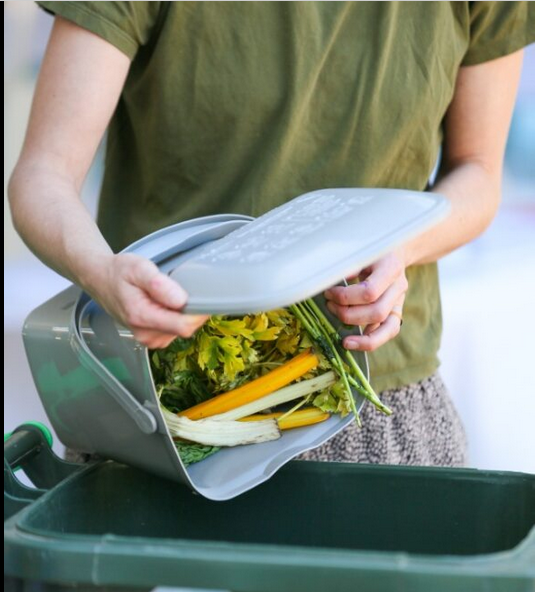June 10th, 2023Greater purpose in growing clean, healthy food

Words: Kevin Childs | Image above: Contributed | Image below: Kyle Barnes
WHEN Edward Benedict lived in a bedsit in East Melbourne, his neighbours called him The Farmer. He had a small patch opposite the MCG, where his veggies grew and grew and grew.
Today, he grows even more at Adsum Farmhouse, a thriving market garden in Glenlyon and his produce has keen followers at the Daylesford Sunday Market and local restaurants. His property is three acres of which an acre is under cultivation.
“It’s great to know that you can make a living on an acre of land. You don’t need 100 acres. Think of this as a vitamin shop. This is the preventative stage of health care.”
He elaborates: “There are four keys to longevity: nutrition, exercise, sleep and emotional health.” He tracks both his calorie intake and his 15,000 daily steps.
For 53-year-old Edward, who previously worked in sales for an organic food company, there is greater purpose in growing clean, healthy food for the community.
His market garden is meticulously ordered. All beds are standardised at 20 metres by 7.5 metres wide, which allows drip irrigation to be interchangeable. To continue the maths: where there was nothing nine years ago, there are 18 sections in six rows.
Add up all his plants and they would just about stretch from Daylesford to Hepburn. He shows an area. “Three months ago, this was gherkins. My pickled gherkins
have a terrific local following.” Once the frost comes, the gherkins are out. Nothing is planted in the same spot for three to four years.
He points to a section, from this garden came a tonne of pumpkins and further on, capsicums and jalapeños. He shows beds of coriander and rocket, long stretches
of still-selling broccoli, an orchard of nashi pears and apples and, after one attempt, manages to wrench a carrot from the earth and chew on it. “You need a pitchfork,”
he explains. Once the garlic is out, in goes the basil, and now parsley, which he says grows like a weed.
Here are three varieties of blueberries, then asparagus, some spinach, rainbow chard in a greenhouse, tomatoes for next year. Oh, and he had rocket, onions and
chillies, plus a rhubarb patch and some leeks. There are 3000 garlic plants readying themselves for the harsh winter ahead to emerge after spring into rich fat bulbs.
We look at the handsome lavender cauliflowers and cabbages that seem to be almost bursting with life. “The soil,” he says, “is like chocolate cake.”

Also under cover are the last of the tomatoes and baby spinach. We gaze at a massive mulberry tree. “The farm is like a wild beast…something coming at you from every angle…insects, weeds, weather and wild life.”
Among his attributes is a lot of re-using. For instance, now that his daughters are aged 11 and 14 their playground has become a nursery, home to two worm farms. He rakes his hand almost lovingly through thousands of worms. A bucket catches their juice. “Black gold,” he says. The juice is diluted to water the plants.
Another nursery is for seedlings but is now holding pumpkins and firewood. A repurposed wash station incorporates sinks and timber rescued from the tip. All of this is tracked on A2 sheets of paper.
Just to add variety, and perhaps to show it’s not all deadly serious, a replica blue British police box stands nearby, just like the Tardis in the Dr Who TV series. “If I make a mistake I just get in the Tardis and fix it.”
There is no tractor, just a tiller which uses little fuel and doesn’t have much impact on the ground. What’s more, he can listen to podcasts, gaining more knowledge and philosophical insights, while he works.
He has a commercial kitchen for the pickled and sliced jalapeños and jars of traditional gherkins with dill and garlic that he sells at the market. The label of the gherkins says it is “packed by the gherking and his family”.
Sitting in the shade of a massive Himalayan cedar, their 1880s house is a former blacksmith’s shop (horseshoes are still uncovered while cultivating the soil as well as blue and white china). The front room of the house hosted lunches for local
councillors when they met down the road in the Glenlyon Hall. Some visitors remember being in the house as children when the great fire of the 1930s burnt out a third of the town. Now part of it is an AirBnB run by Fiona, Edward’s wife.
Spectacular bird and animal themed murals enliven the house and fences. Adsum Farmhouse was a title given to the property many owners back. Edward found it literally means to be present. When Latin was still taught in schools, students responded with “adsum” at roll call. It seems to fit: all present and correct.










